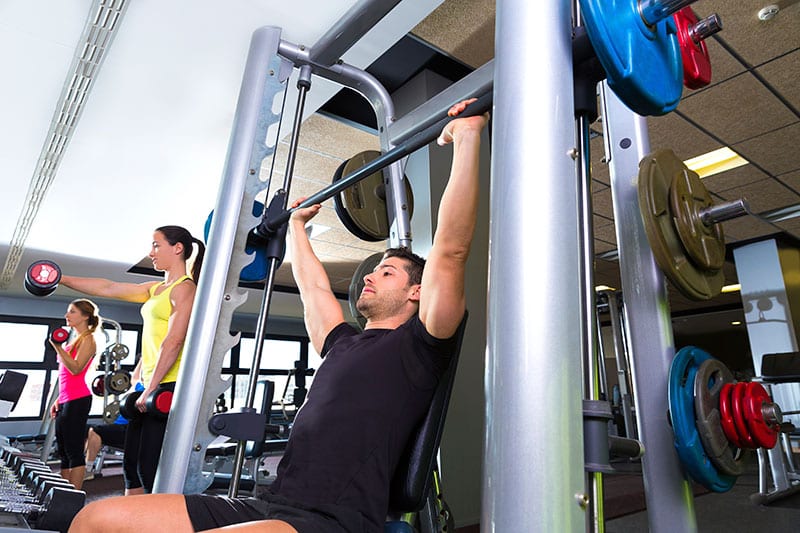Evolution of Exercise
Our modern exercise habits evolved into what they are today. Through good and bad, our habits are constantly changing as our understanding of human physiology continues to evolve. History teaches us that humans have always needed physical fitness, but the reasons behind that need change with the times.
The Real Paleo Workout
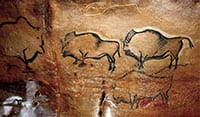 Our ancestors performed movements, for example, that were survival-based. If you couldn’t run, jump, climb or throw things, you couldn’t survive. That applied to men, women, and children. Historians assume that once early humans met their basic needs, they also played and danced, which is another instinctual form of exercise. Even today, the few hunter-gatherer tribes that have very little contact with the modern world still love a good dance party when the work is done.
Our ancestors performed movements, for example, that were survival-based. If you couldn’t run, jump, climb or throw things, you couldn’t survive. That applied to men, women, and children. Historians assume that once early humans met their basic needs, they also played and danced, which is another instinctual form of exercise. Even today, the few hunter-gatherer tribes that have very little contact with the modern world still love a good dance party when the work is done.
The First Olympians
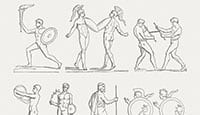 The Ancient Egyptians, Greeks, and Romans still had to move to survive like their Paleolithic ancestors, but they also had to be prepared for war. They valued warrior-style competitions. Most famously, the Greeks started the first Olympics. Later, Greeks and Romans had the idea to celebrate the ideal physical body and strength. They then used exercise as a philosophical ideal and an essential element of education.
The Ancient Egyptians, Greeks, and Romans still had to move to survive like their Paleolithic ancestors, but they also had to be prepared for war. They valued warrior-style competitions. Most famously, the Greeks started the first Olympics. Later, Greeks and Romans had the idea to celebrate the ideal physical body and strength. They then used exercise as a philosophical ideal and an essential element of education.
Scientific Movement
It was many years before exercise evolved again. It was during the Renaissance period that it started to fl ourish once more, mostly from an intellectual side. In 1553, the first book addressing physical exercise and its benefits was published. It analyzed and categorized exercises, sports and games from a medical standpoint and gave advice on how to prevent and recover from injury. Nearly two decades later, another book connected the studies of hygiene, diet, exercise and natural methods for treating disease. This book laid out the principles of physical therapy. It influenced physical education and training methods that developed in Europe two centuries later.
ourish once more, mostly from an intellectual side. In 1553, the first book addressing physical exercise and its benefits was published. It analyzed and categorized exercises, sports and games from a medical standpoint and gave advice on how to prevent and recover from injury. Nearly two decades later, another book connected the studies of hygiene, diet, exercise and natural methods for treating disease. This book laid out the principles of physical therapy. It influenced physical education and training methods that developed in Europe two centuries later.
The Birth of Intentional Exercise
Duri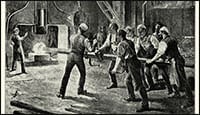 ng the Industrial Revolution, machines began doing much of the physical labor, and many people became more sedentary. Soldiers in World War II began to fail their physicals. This launched the movement toward intentional physical exercise. Military service was a point of civic duty and pride, and it required a certain level of fitness. Germany opened a school that emphasized physical exercise and games, and physical training became an important part of education. In the early 1800s, a man named Friedrich Jahn, “The Father of Gymnastics,” felt it was his duty after having lived through Napoleon’s invasion of Germany to teach young men gymnastics and calisthenics to boost physical strength. For many years, gymnastics and calisthenics were the main forms of exercise. As a result, we now call many fitness centers “gyms.”
ng the Industrial Revolution, machines began doing much of the physical labor, and many people became more sedentary. Soldiers in World War II began to fail their physicals. This launched the movement toward intentional physical exercise. Military service was a point of civic duty and pride, and it required a certain level of fitness. Germany opened a school that emphasized physical exercise and games, and physical training became an important part of education. In the early 1800s, a man named Friedrich Jahn, “The Father of Gymnastics,” felt it was his duty after having lived through Napoleon’s invasion of Germany to teach young men gymnastics and calisthenics to boost physical strength. For many years, gymnastics and calisthenics were the main forms of exercise. As a result, we now call many fitness centers “gyms.”
Competitive Sports Culture
 In the 20th century, the rise of competitive sport emerged as part of the thriving fitness industry. Professor Desbonnet published fitness journals which had photos of male and female athletes to make exercise and strength training fashionable, and began opening exercise clubs. At the same time, Bernarr Macfadden became a guru in healthy living. He recommended time spent in nature, vigorous exercise done daily, and to eliminate alcohol, tea, coffee, and white bread. Macfadden also staged the first physique contest in America in the early 1900s. Desbonnet and Macfadden started the fitness industry as we currently know it.
In the 20th century, the rise of competitive sport emerged as part of the thriving fitness industry. Professor Desbonnet published fitness journals which had photos of male and female athletes to make exercise and strength training fashionable, and began opening exercise clubs. At the same time, Bernarr Macfadden became a guru in healthy living. He recommended time spent in nature, vigorous exercise done daily, and to eliminate alcohol, tea, coffee, and white bread. Macfadden also staged the first physique contest in America in the early 1900s. Desbonnet and Macfadden started the fitness industry as we currently know it.
The Rise of Modern Fitness
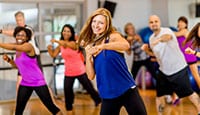 Trends within the fitness industry have all been based on the goals of physical aesthetics and body building, but some fell short. The vibrating belt, aerobics, home workout videos and home gyms, the Thighmaster, Ab Rollers and 8 Minute Abs, Pilates, cycle class, sauna suits and many more trends were gimmicks, but some showed benefits. Organizations arose to provide real help to the general population, and the personal trainer was born.
Trends within the fitness industry have all been based on the goals of physical aesthetics and body building, but some fell short. The vibrating belt, aerobics, home workout videos and home gyms, the Thighmaster, Ab Rollers and 8 Minute Abs, Pilates, cycle class, sauna suits and many more trends were gimmicks, but some showed benefits. Organizations arose to provide real help to the general population, and the personal trainer was born.
Today, popular workouts are CrossFit, strength training with free weights, group exercise classes of varying types, circuit training and high intensity interval training. As our technology improves and we continue to learn, it’s highly likely that some recommendations and suggestions will change when it comes to exercise. The biggest take-away for all of us is this: find the fitness routine that works best for you and that you enjoy the most to help you reach your goals. Then, stick with it!
Click here to find out more about Personal Training at Mercy Fitness Center.
By: Erin Covey, Personal Trainer at Mercy Fitness


